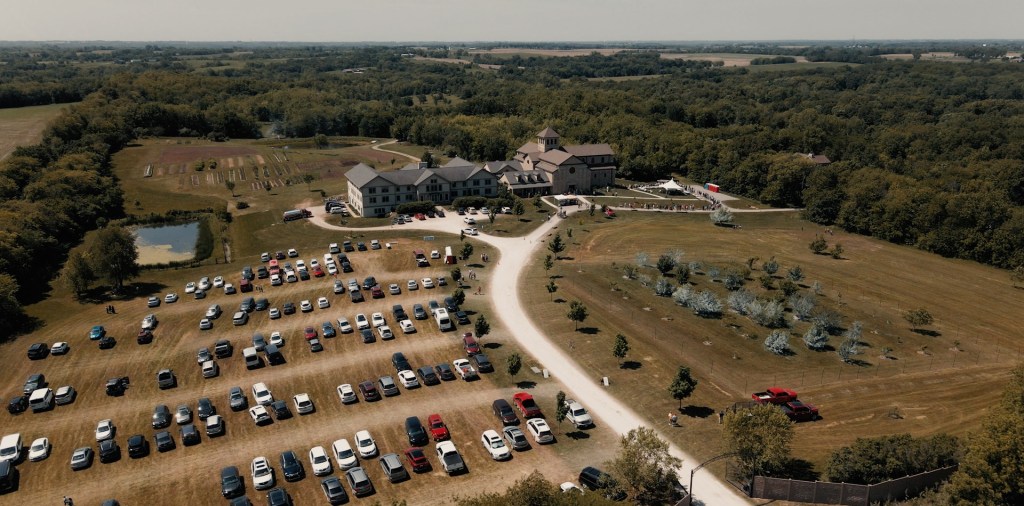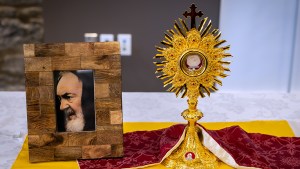I went to see the body of Sister Wilhelmina, the founder of a Benedictine congregation of religious sisters in Gower, Missouri.
“I was really shocked, more than I thought I would be,” I wrote on Facebook. “But I’ve been thinking of her — and praying — ever since.”
“What do you mean, ‘shocked’?” someone asked.
So I confessed the truth: What I wanted to write was that I was weirded out by seeing Sister Wilhelmina — but that my attitude is improving.
Sister Wilhelmina story has become a minor sensation, worldwide.
“Many Travel to See ‘Intact’ Remains of Exhumed Nun Who Died in 2019,” reported People magazine.
London’s Daily Mail told “The incredible story of Sister Wilhelmina, the Missouri nun whose body shows little sign of decay.”
Sister Wilhelmina was born Mary Elizabeth Lancaster in 1924 St. Louis. She heard God’s voice when she received her First Communion at age 9. Jesus asked her to be his. She answered “Yes” with her life. She took vows with the Oblate Sisters of Providence in 1944. In 1995, in her 70s, she left the Oblates to found her own Benedictine order that settled in Gower, Missouri — 45 minutes from my home in Kansas. She died there in 2019 at age 94 after crying out, “I saw Jesus! … I want to go to heaven!”
Her body was discovered unexpectedly because her convent is so successful that it has had to expand its facilities, requiring her gravesite to be moved.

This puts the Church in a tight spot
One of the great blessings of being a member of the Catholic Church is that we belong to a careful, deliberative institution that does not rush to conclusions and so avoids embarrassing mistakes when it comes to miraculous phenomenon.
Sister Wilhelmina Lancaster is no exception. I refer to her body as “uncorrupted” instead of “incorruptible” because of what the bishop of Kansas City-St. Joseph said.
“It is understandable that many would be driven by faith and devotion to see the mortal remains of Sister Wilhelmina given the remarkable condition of her body, but visitors should not touch or venerate her body, or treat them as relics,” said Bishop James Johnston. “Incorruptibility has been verified in the past, but it is very rare. There is a well-established process to pursue the cause for sainthood, but that has not been initiated in this case yet.”
So, for now, I’m left to evaluate my experience on shaky ground: Personal feelings rather than established facts.
To me, the whole experience was strange but powerful. Everything about it was very outside our experience in secularized American culture. But ever since I visited, I can’t get Sister Wilhelmina out of my mind.
First, going to see the dead body of someone you never met is unusual, and seeing lines of people waiting to do so felt bizarre.
But the more I thought of it afterwards, the more natural it felt. People lined up to see Queen Elizabeth’s body. They didn’t do so because they wanted to see a corpse; they did so because we all know somewhere deep inside that we are our bodies and vice versa; that even though spirit and body were separated, the body of the queen still had a meaning.
One of the fundamental insights that Christianity has given to the world is this understanding of our humanity.
The feast of the Assumption – when we celebrate Mary being brought body and soul to heaven – reminds us of it every summer.
That mystery “shows us that God wills to save the whole man, namely, save his soul and body,” Pope Francis explains.
Human persons are a body-soul unity, incarnated souls as much as ensouled bodies. It’s not that “I” have a body or “I” have a soul, but rather that we are our body and soul, together.
A holy person’s body has an even greater significance than a queen’s.
Elizabeth was thrust into her position by lineage and carried it out with dignity; Sister Wilhelmina fought for her position day after day through faith, hope, and love.
To visit Queen Elizabeth’s body was to participate in world history, where great men and women shape our times; to visit a holy person’s body is to participate in salvation history, where ordinary men and women are shaped by eternity.
Seeing the devotionalism of so many people there was also very odd to me — at first.
At the body, people were taking part in the experience with gusto, touching things to the body and praying, apparently unaware of the bishop’s caution.
Afterwards, I joked that they had a more Catholic soul than mine. But the more I think of it, the truer that seems to be.
Every Catholic Church has a crucifix in the center, the depiction of our own dead founder, precisely so that we will have exactly this kind of experience. Catholics should be used to looking at a dead body and thinking not of the end of life so much as the future life we all have.
To see Sister Wilhelmina’s body separated from her soul is to see how horrifying and unnatural death is, but to see her body undecayed is to remember that Jesus has overcome the horror of death and will restore us all one day.
I don’t know if Sister Wilhelmina is a saint or not, but she is inspiring me to be one, if I can.




